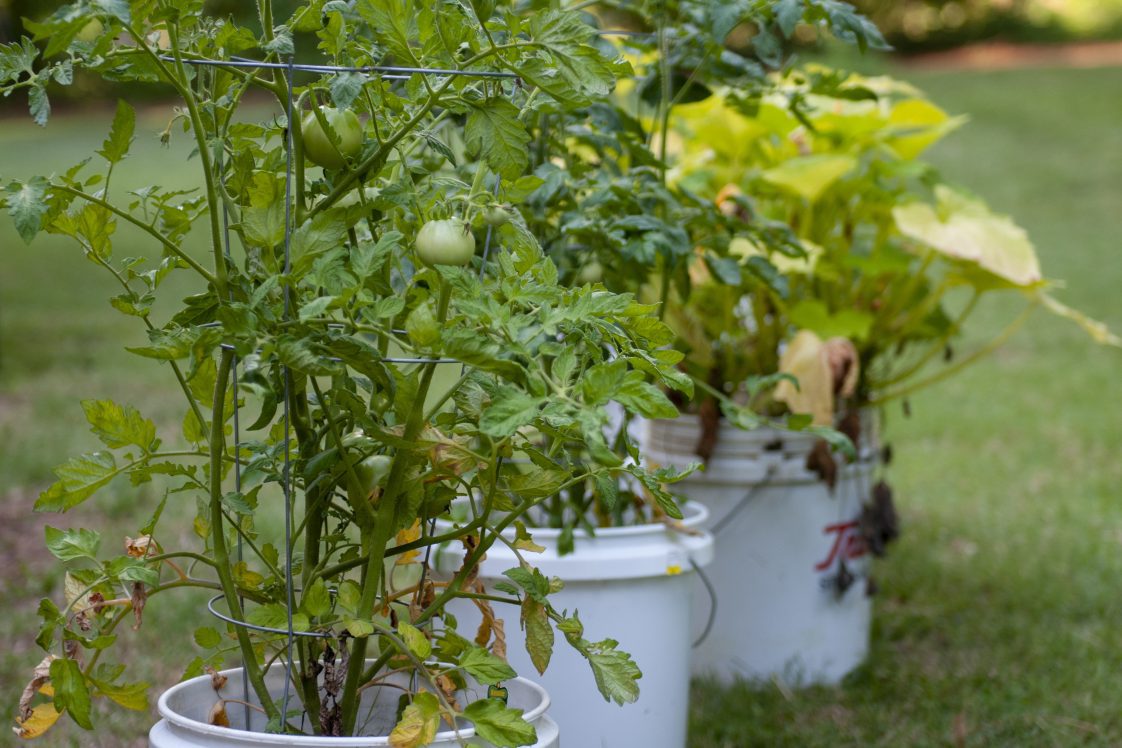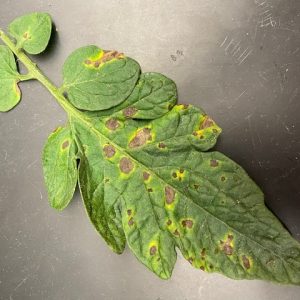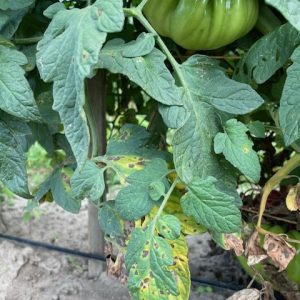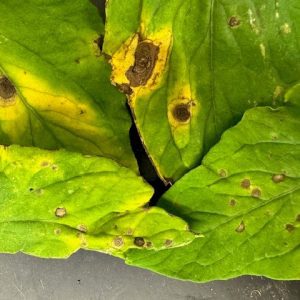Lawn & Garden

Early blight is caused by the fungus Alternaria linariae. It is the most common disease of tomatoes in Alabama and begins to appear in home gardens in late May through June depending on planting date of the garden and prevailing weather conditions. The leaves, fruit and stem can be affected by early blight.
Lesions first develop on lower leaves as small, black spots that expand up to a 1⁄2-inch in diameter. Early blilght lesions are characterized by target-like concentric rings in the darkened area. Lesions are often surrounded by a yellow halo, and the entire leave may turn yellow with time.
Favorable Conditions and Symptoms
Symptoms of the disease progress up through the plant canopy and defoliation may occur in the lower part of the plant leaving the fruit susceptible to sunscald. Fruit lesions may appear near the stem attachment on green or red ripening fruit. Lesions can expand to cover the entire fruit and are typically sunken, leathery and dark brown to black, while also expressing the concentric rings. The disease is favored by warm, wet conditions so consistent rainfall and/or overhead irrigation provides environmental conditions favorable for its development.
Managing Early Blight
Management of the disease begins by planting early blight-tolerant tomato varieties. Tolerant varieties will still develop symptoms, but symptoms will be reduced and fruit yield will be spared. When possible, growers should avoid overhead irrigation. Growers can also apply a protective-type fungicide weekly, or less frequently under hot, dry conditions. Fungicides are most effective when applied before the disease shows up and shortly after it is identified in the garden.




